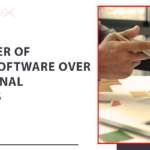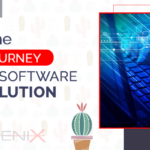Claims Software vs. Traditional Methods: Why Making the Switch Matters
April 8, 2024
Claims processing has improved significantly in recent years due to advancements in technology and the adoption of digital processes. Here are some ways in which claims processing has improved:
Automation: Many aspects of claims processing, such as data entry, document handling, and claim routing, can now be automated using Claims processing software. This reduces errors and speeds up the process, resulting in faster claim resolution.
Digitalization: Insurance companies are increasingly adopting digital processes for claims handling, such as digital claims submissions, electronic payment processing, and virtual inspections. This eliminates the need for paper-based processes and enables claims to be processed more quickly and efficiently.
Predictive analytics: Claims software can use predictive analytics to identify potential fraud, predict claim outcomes, and assess risk. This enables insurers to prioritize and manage claims more effectively, reducing the time and resources required to process claims.
Customer self-service: Insurance companies are now providing customers with self-service portals and mobile apps that allow them to track the progress of their claims, upload documents, and communicate with adjusters. This improves customer satisfaction and reduces the workload for adjusters.
Overall, these improvements have enabled insurance companies to process claims more quickly, accurately, and efficiently, resulting in better customer service and lower costs.
Claims software refers to computer programs or applications that are designed to assist insurance companies and adjusters in processing and managing insurance claims. These software programs are used to automate and streamline the claims process, from the initial reporting of a claim to the final settlement.
Faster and more accurate claims processing: Claims managing software can automate many of the manual tasks involved in processing claims, such as data entry and document handling, reducing errors and speeding up the process.
Improved customer service: Claims processing software can provide customers with real-time updates on the status of their claims and enable them to track the progress of their claims online, improving customer satisfaction.
Better fraud detection: The software can use analytics and machine learning algorithms to identify potential fraud, helping insurers to detect and prevent fraudulent claims.
More efficient resource allocation: The software can help insurers to allocate resources more efficiently by automating the assignment of claims to adjusters based on their skills and workload.
Overall, claims software can help insurers to improve their claims-handling processes, reduce costs, and provide better service to their customers.
Claims Management Software
This software is a type of computer program designed to help organizations process and manage insurance claims. The software typically provides a central platform for managing claims from start to finish, including processing claims, tracking progress, managing documents, communicating with customers, and generating reports.
Some of the key features of claim software may include:
Automated claim processing: Claims managing software can help automate the process of receiving, evaluating, and processing insurance claims, reducing the need for manual data entry and paperwork.
Document management: Claims managing software can store and manage documents related to a claim, such as photos, invoices, and receipts, making it easier to access and share information with relevant parties.
Reporting and analytics: Claims managing software can generate reports and analytics to help organizations identify trends and areas for improvement in their claims process.
Communication tools: Claims management software can enable real-time communication between the insurer and the claimant, helping to resolve issues and keep everyone informed of the status of the claim.
Reporting and analytics: Claims managing software can generate reports and analytics to help organizations identify trends and areas for improvement in their claims process.
Choosing the best company for claim software
When choosing the best company for claims management software, it’s important to consider a number of factors to ensure that you find the right solution for your organization. Here are a few considerations to keep in mind:
- Features: Look for a software solution that offers the features your organization needs to efficiently manage claims. Consider features such as automated claim processing, document management, communication tools, and reporting and analytics.
- User-friendliness: Make sure that the software is easy to use and intuitive for your staff. A user-friendly interface can help your team quickly learn to navigate the system and perform their tasks more efficiently.
- Integration: Consider whether the software can integrate with your existing systems, such as your CRM or accounting software. This can help streamline your workflows and reduce manual data entry.
- Customer support: Ensure that the software vendor offers good customer support, including technical support and training, to help your staff use the software effectively.
- Reputation and reviews: Look for a company with a good reputation and positive reviews from other users. Consider reading reviews and case studies and speaking with references provided by the vendor.
Cost: Finally, consider the cost of the software and whether it fits within your budget. Some vendors may offer a subscription-based pricing model, while others may charge a one-time fee for the software.
By evaluating these factors and comparing different vendors, you can choose the best company for your claim software needs. It’s important to take the time to research and evaluate different options to ensure that you choose a solution that meets your specific requirements and budget.










